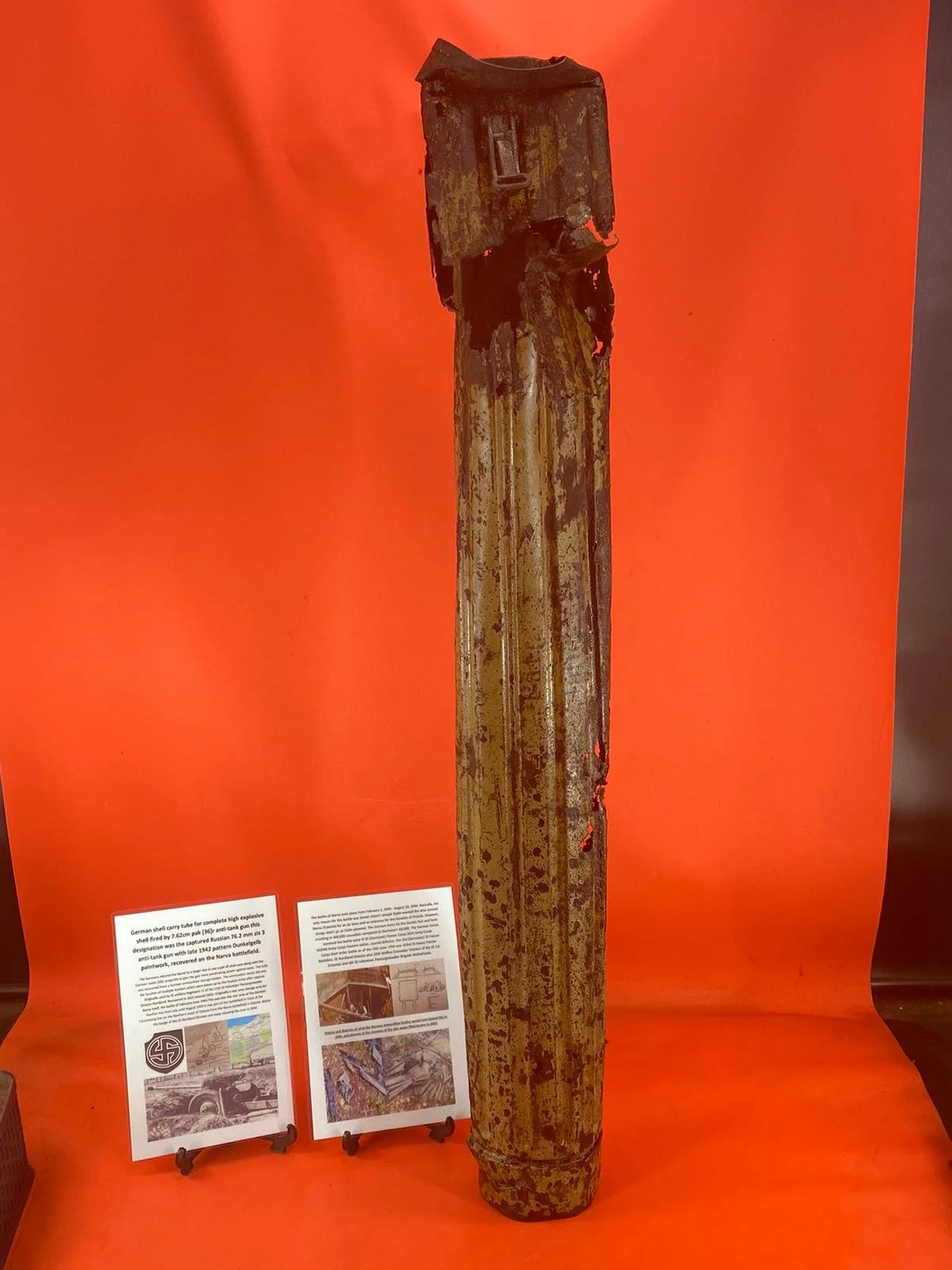 Image 1 of 10
Image 1 of 10

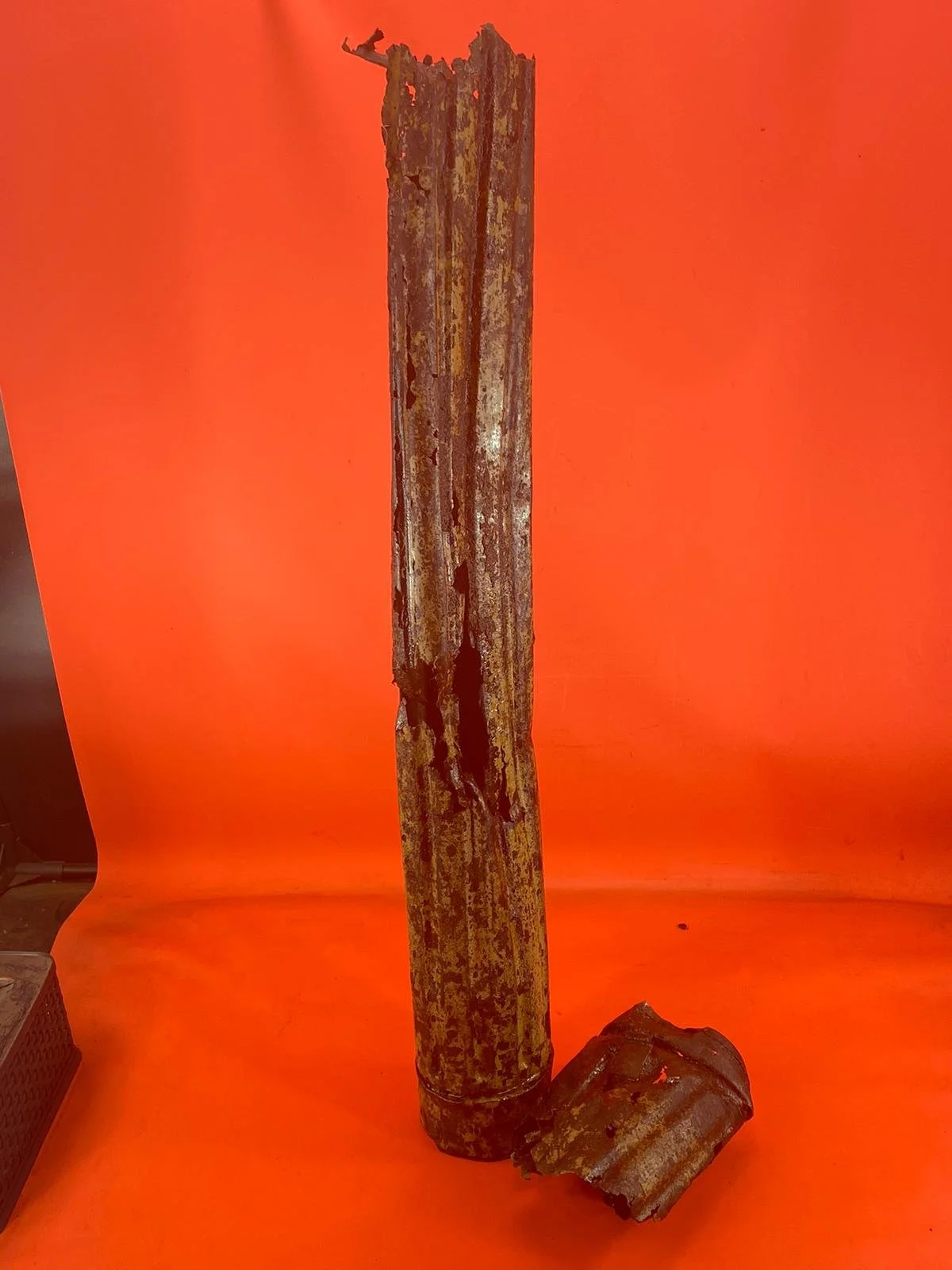 Image 2 of 10
Image 2 of 10

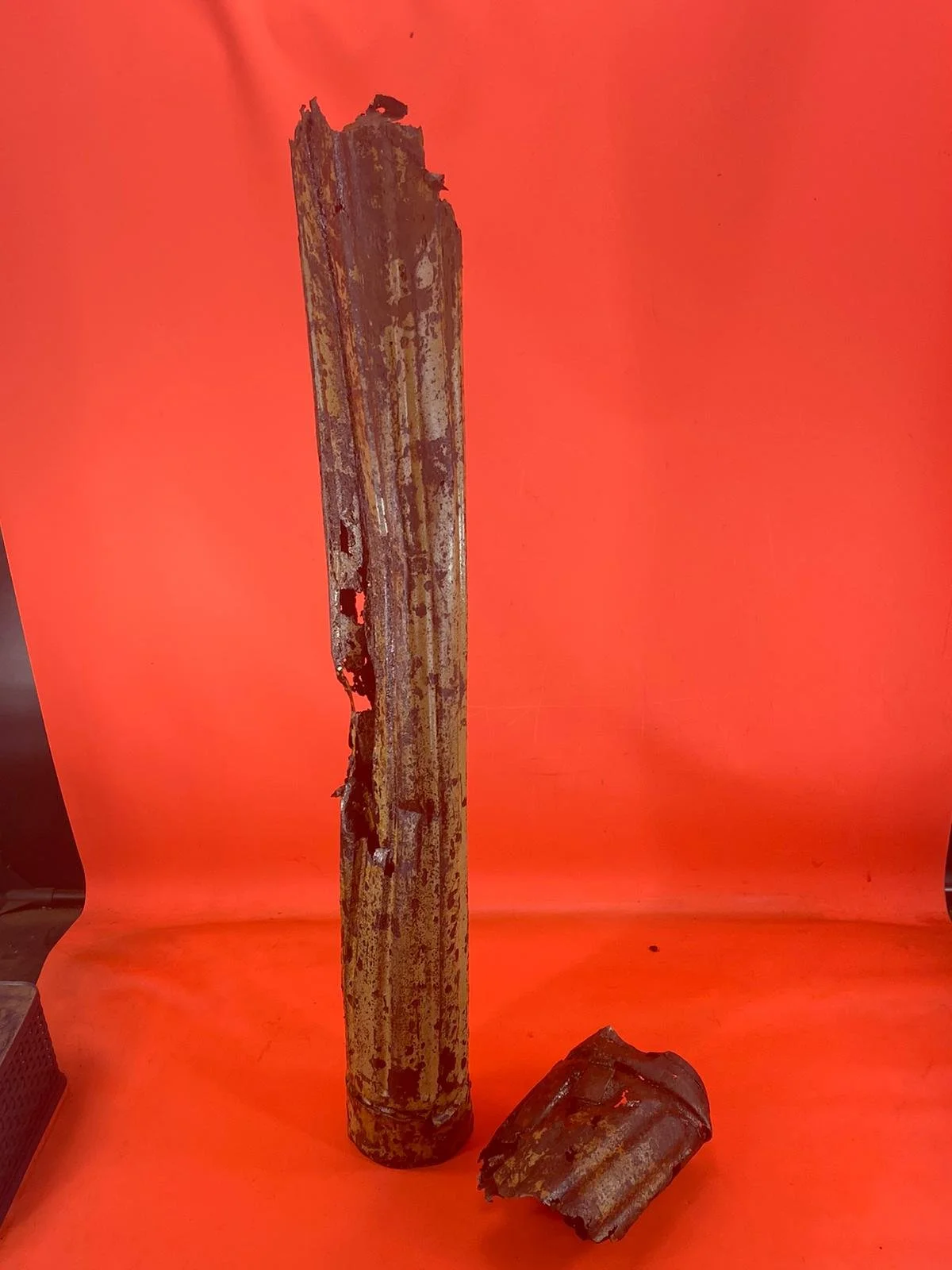 Image 3 of 10
Image 3 of 10

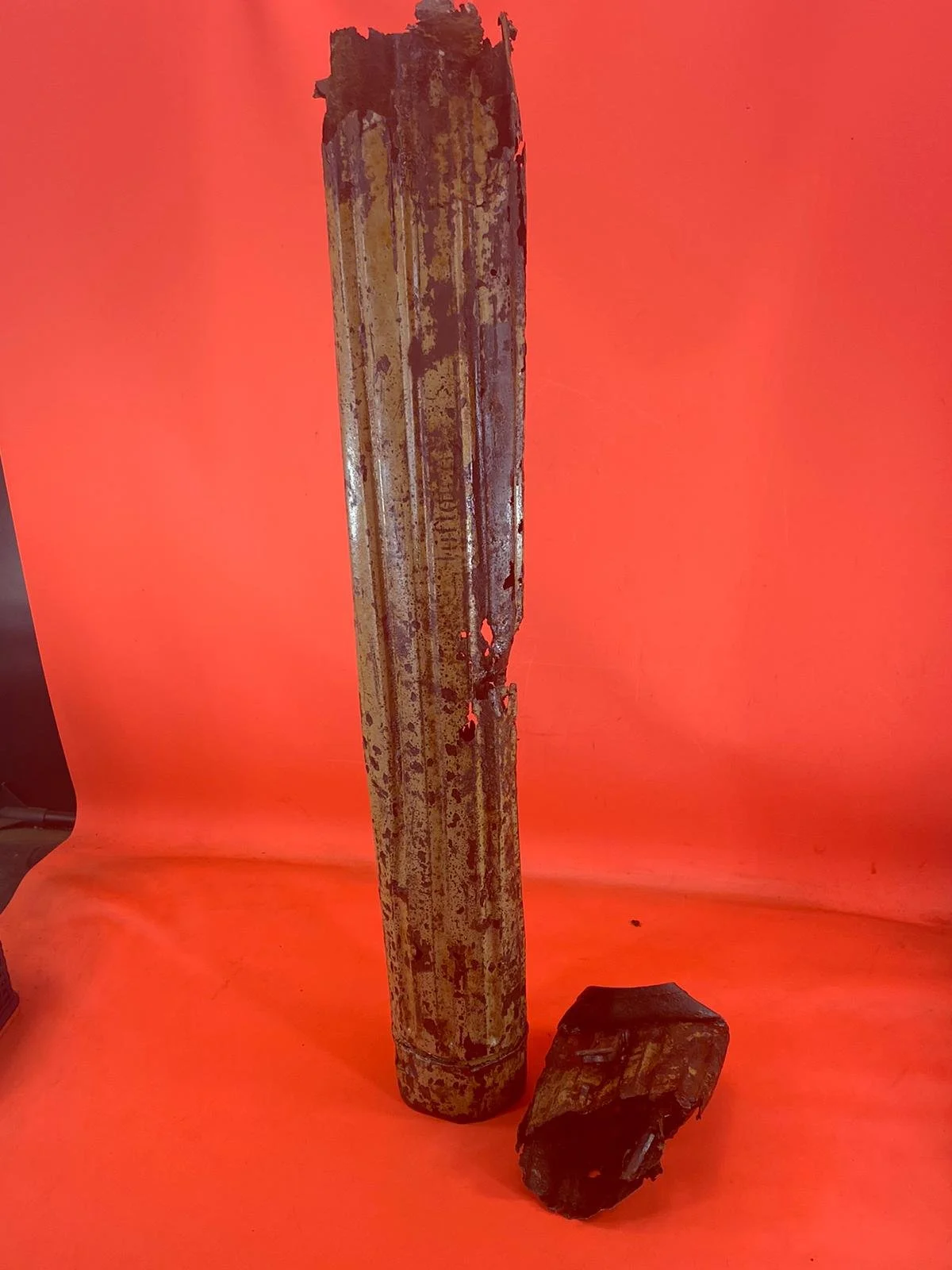 Image 4 of 10
Image 4 of 10

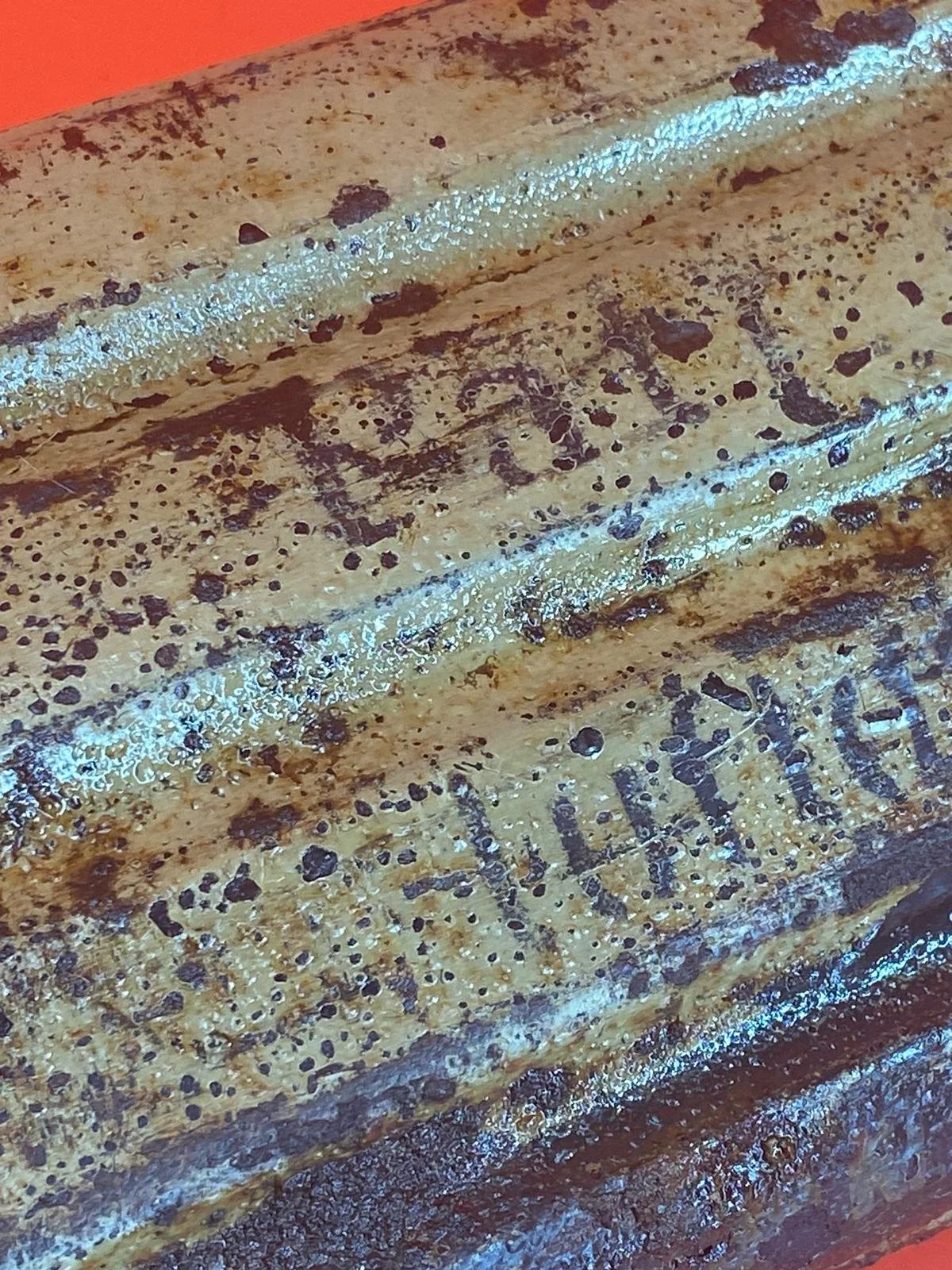 Image 5 of 10
Image 5 of 10

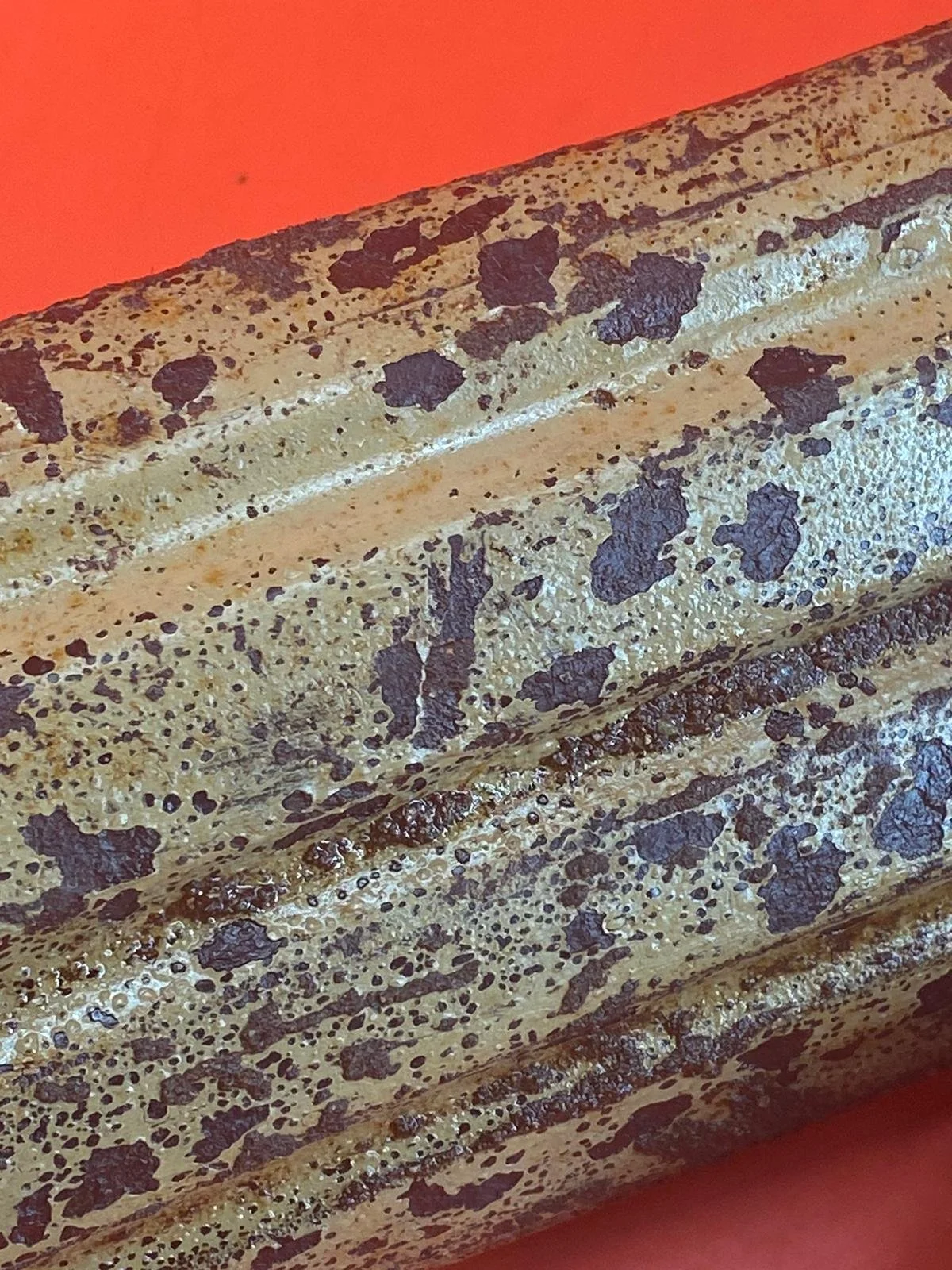 Image 6 of 10
Image 6 of 10

 Image 7 of 10
Image 7 of 10

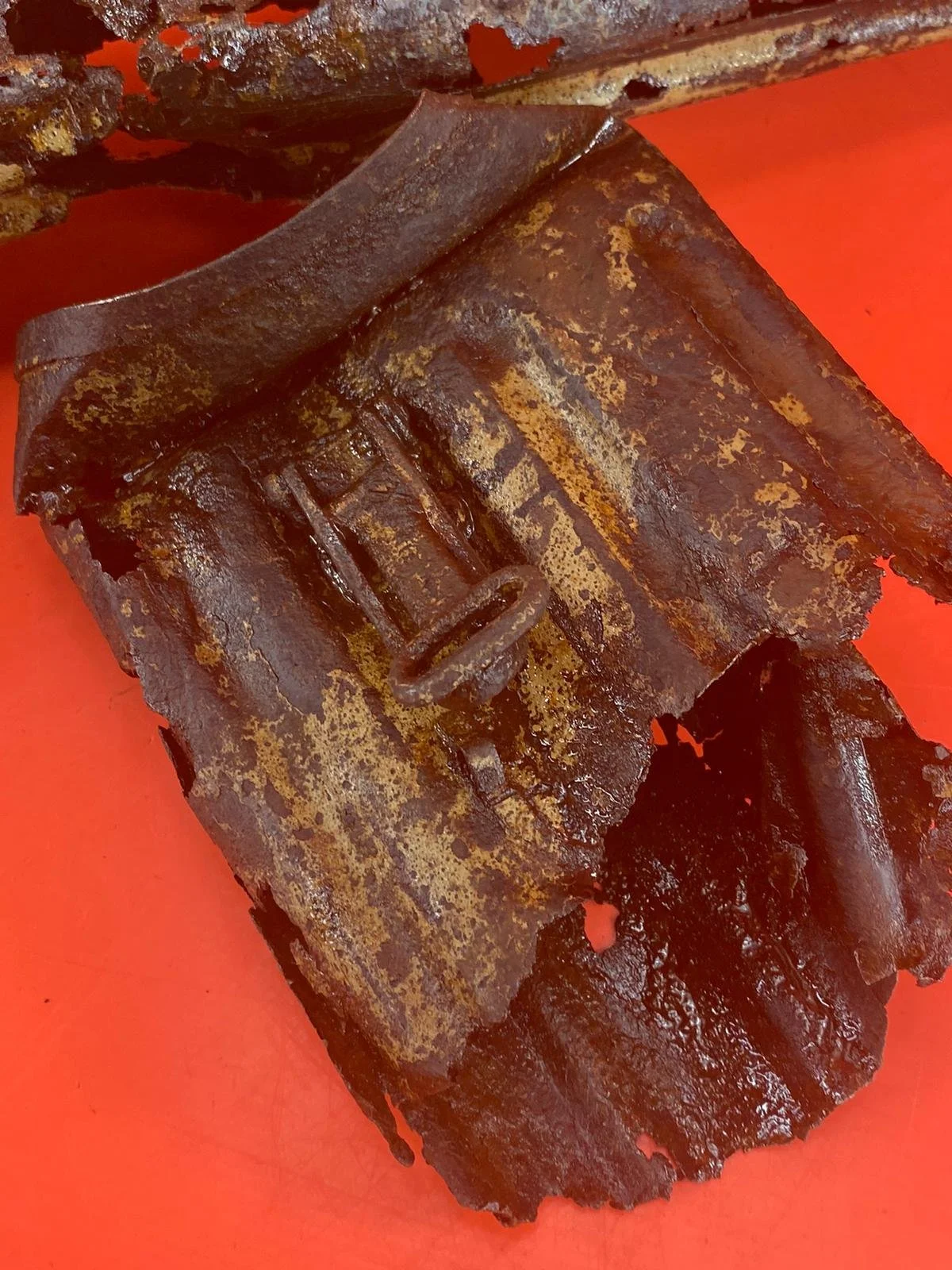 Image 8 of 10
Image 8 of 10

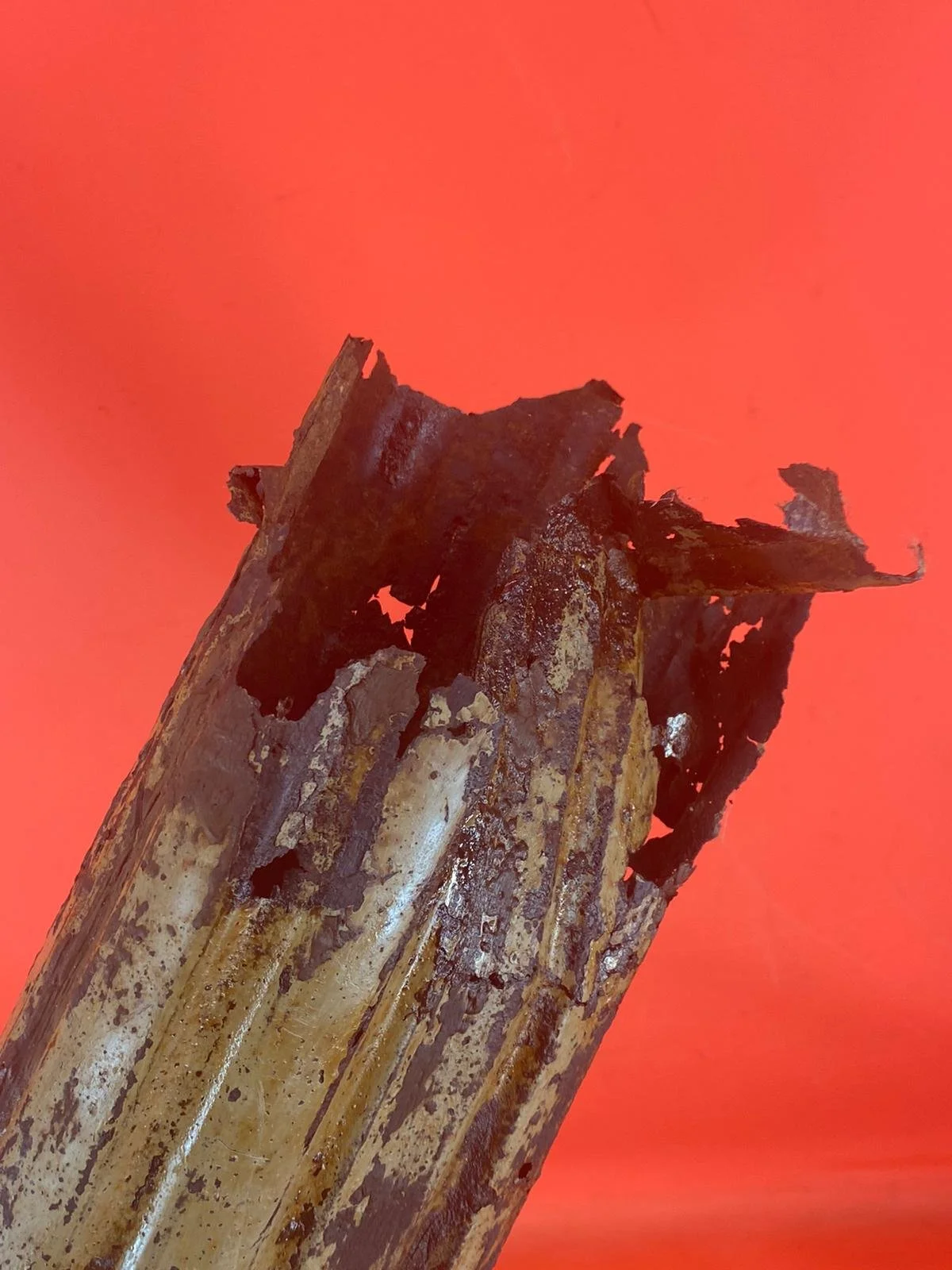 Image 9 of 10
Image 9 of 10

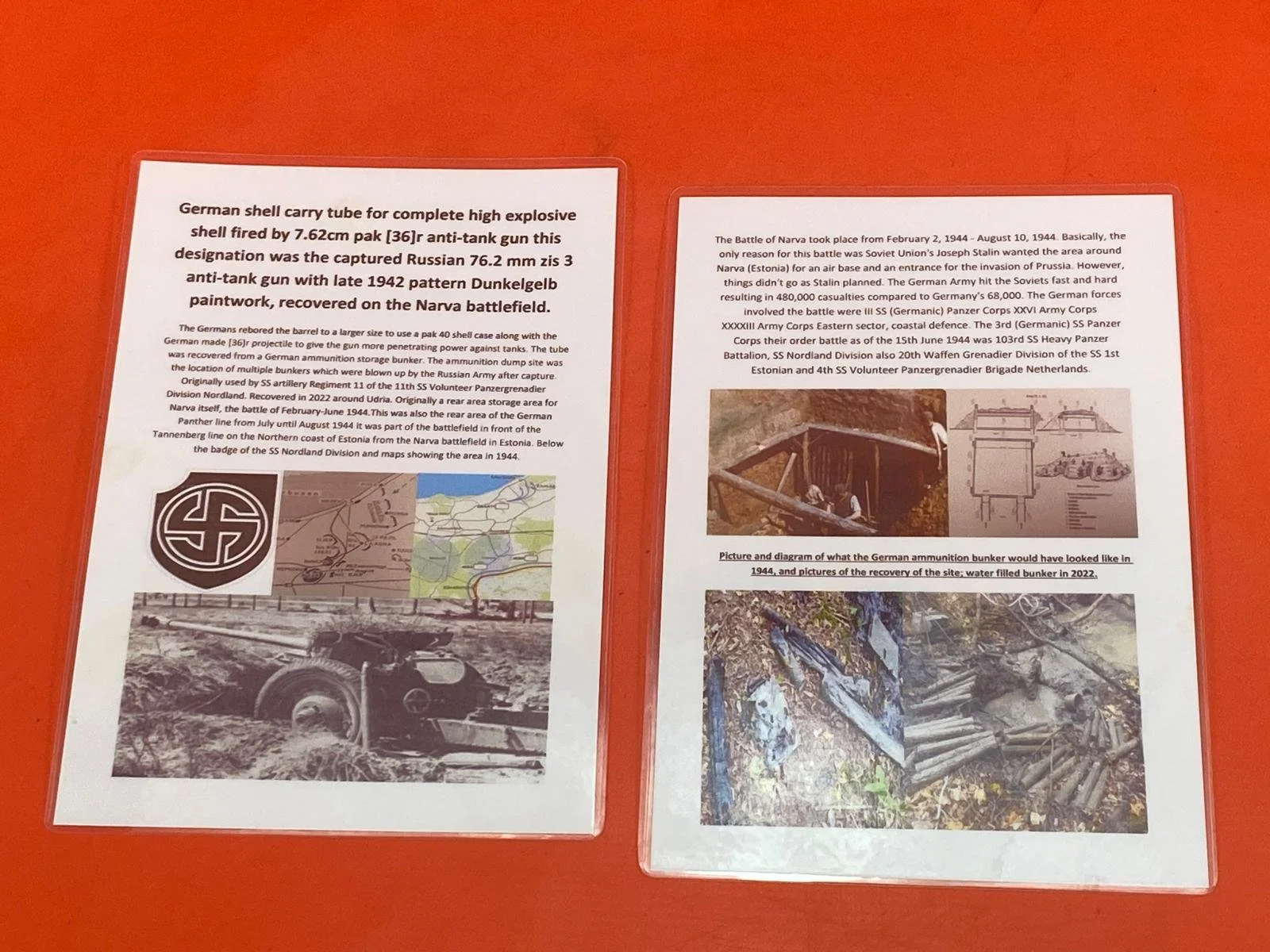 Image 10 of 10
Image 10 of 10











German metal transport container for 76.2mm anti tank gun shell with rare 1942 pattern Dunkelgelb paintwork from SS ammunition store in Narva
This is part of a group of items recovered in 2022 from an old German ammunition bunker, which was blown up by the Russian Army after capture, resulting in most items being battle-damaged. This piece is a near-complete German metal transport container for a 7.62cm Pak[36]r anti-tank gun shell, missing its lid.
The tube retains rare 1942-pattern Dunkelgelb (sand colour) paintwork, the only example so far found with this finish. Such tubes are extremely rare on the battlefield, as their thin metal construction usually causes them to rot away. This example is split into two parts but remains very solid, not breaking apart. Most of the original paintwork survives, along with black stamped markings on the side. Inside, the wooden rail remnants and bottom rack are still in place. It has been carefully cleaned and is perfect for display or as a rare addition to any collection.
The item comes with two A5 laminated information cards, including multiple photographs.
The tube was recovered from a German ammunition storage bunker. The information cards include diagrams of bunker construction, original plans, and photographs showing the recovery process. The bunker complex was part of an ammunition dump around Udria, blown up by the Russian Army after capture. The site was originally used by SS Artillery Regiment11 of the 11th SS Volunteer Panzergrenadier Division Nordland as a rear-area storage facility during the Battle of Narva (February-June 1944) and later during the German Panther line defenses (July-August 1944). It was part of the battlefield in front of the Tannenberg Line on the northern coast of Estonia.
The 7.62cm Pak[36]r was a captured Russian 76.2mm ZiS?3 anti-tank gun, re-bored by the Germans to use a Pak40 shell case along with a German-made [36]r projectile, giving the gun improved penetration against tanks.
The Battle of Narva (2 February-10 August 1944) was fought as the Soviet Union, under Joseph Stalin, aimed to seize Narva for an air base and as an entry point into Prussia. The German forces responded quickly, inflicting approximately 480,000 Soviet casualties compared to 68,000 German losses. German units involved included III SS (Germanic) Panzer Corps, XXVI Army Corps, XXXXIII Army Corps (Eastern sector), and coastal defence units. The 3rd (Germanic) SS Panzer Corps order of battle on 15 June 1944 included the 103rd SS Heavy Panzer Battalion, SS Nordland Division, the 20th Waffen Grenadier Division of the SS (1st Estonian), and the 4th SS Volunteer Panzergrenadier Brigade Netherlands.
This is part of a group of items recovered in 2022 from an old German ammunition bunker, which was blown up by the Russian Army after capture, resulting in most items being battle-damaged. This piece is a near-complete German metal transport container for a 7.62cm Pak[36]r anti-tank gun shell, missing its lid.
The tube retains rare 1942-pattern Dunkelgelb (sand colour) paintwork, the only example so far found with this finish. Such tubes are extremely rare on the battlefield, as their thin metal construction usually causes them to rot away. This example is split into two parts but remains very solid, not breaking apart. Most of the original paintwork survives, along with black stamped markings on the side. Inside, the wooden rail remnants and bottom rack are still in place. It has been carefully cleaned and is perfect for display or as a rare addition to any collection.
The item comes with two A5 laminated information cards, including multiple photographs.
The tube was recovered from a German ammunition storage bunker. The information cards include diagrams of bunker construction, original plans, and photographs showing the recovery process. The bunker complex was part of an ammunition dump around Udria, blown up by the Russian Army after capture. The site was originally used by SS Artillery Regiment11 of the 11th SS Volunteer Panzergrenadier Division Nordland as a rear-area storage facility during the Battle of Narva (February-June 1944) and later during the German Panther line defenses (July-August 1944). It was part of the battlefield in front of the Tannenberg Line on the northern coast of Estonia.
The 7.62cm Pak[36]r was a captured Russian 76.2mm ZiS?3 anti-tank gun, re-bored by the Germans to use a Pak40 shell case along with a German-made [36]r projectile, giving the gun improved penetration against tanks.
The Battle of Narva (2 February-10 August 1944) was fought as the Soviet Union, under Joseph Stalin, aimed to seize Narva for an air base and as an entry point into Prussia. The German forces responded quickly, inflicting approximately 480,000 Soviet casualties compared to 68,000 German losses. German units involved included III SS (Germanic) Panzer Corps, XXVI Army Corps, XXXXIII Army Corps (Eastern sector), and coastal defence units. The 3rd (Germanic) SS Panzer Corps order of battle on 15 June 1944 included the 103rd SS Heavy Panzer Battalion, SS Nordland Division, the 20th Waffen Grenadier Division of the SS (1st Estonian), and the 4th SS Volunteer Panzergrenadier Brigade Netherlands.
